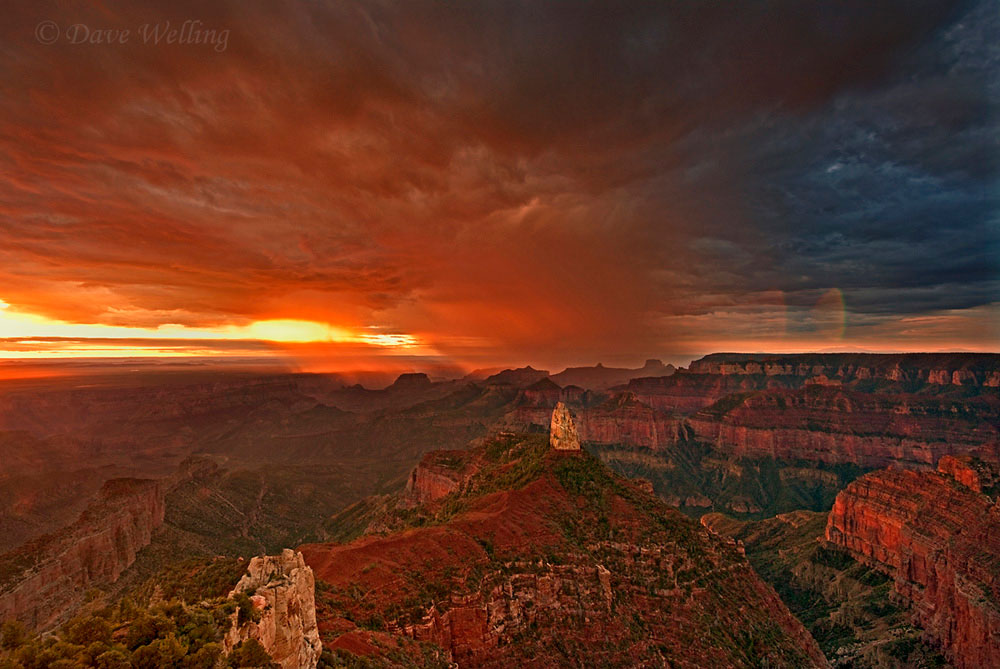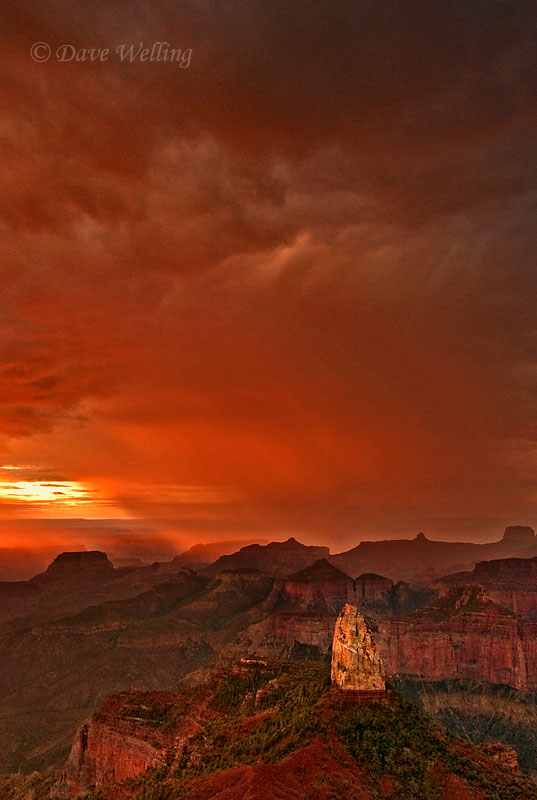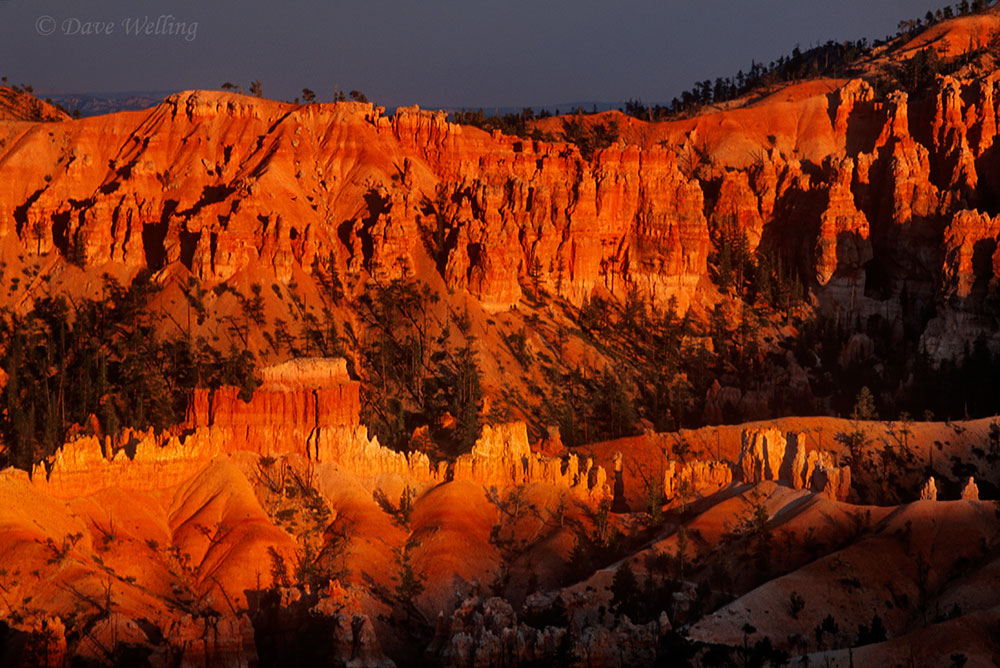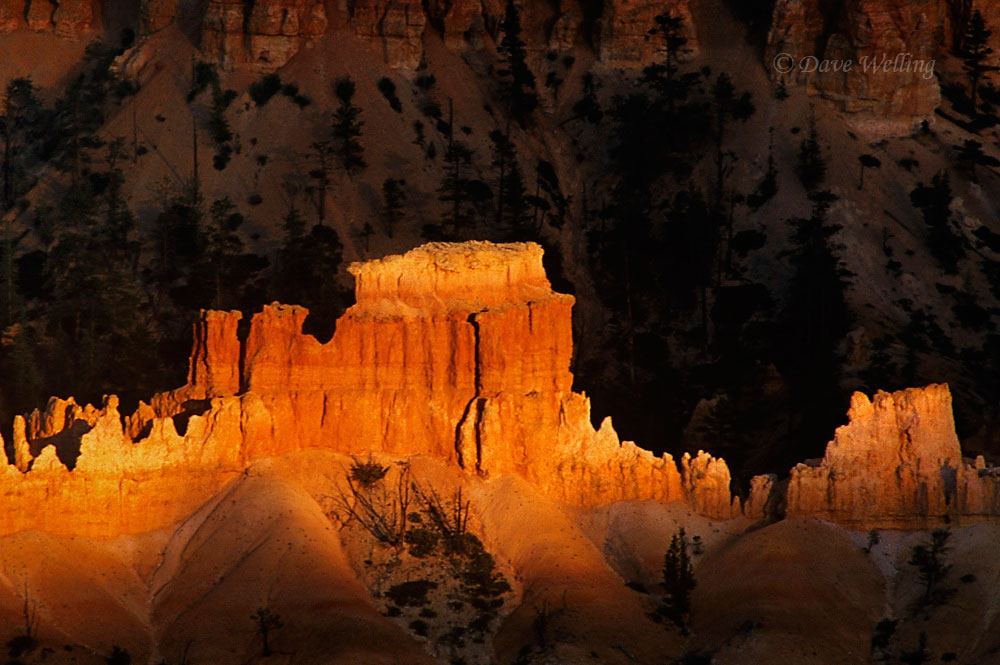Everyone automatically thinks of wide angle lenses when discussing landscape photography, those grand scenics that go on forever. But you should also consider using your medium, and even super, telephoto lenses for landscape photography under certain conditions. Consider this Point Imperial grand landscape image, taken with a 17-35mm wide angle zoom lens, that takes in the Grand Canyon and the spectacular clearing storm clouds. It is an image that gives you a real feel of “being there”.

But there are images within that image that bear consideration. Some key elements within the scene that really call for their own image. Switching from a 17-35mm zoom lens to a 70-300mm medium telephoto at about 200mm I isolated on Mount Hayden and the storm cloud formation right above it. This composition makes a great vertical image as shown below. In this case, the elements within the grand scene justified another composition and the two images give the viewer a different feel (two ways to interpret the scene in front of you). Always look for the image within the image and how you might change your perspective or composition to best capture these various images.

The other consideration for applying those longer lenses is when changing light conditions create a featured element within the grand landscape that you want to isolate and feature. The setting sun over these Bryce Canyon hoodoos creates a beautiful range of rust and red color elements and a 28-70mmF4 wide-angle zoom captured the various elements quite well with a soft, subtle reddish glow to the sandstone formations.

But then the light began changing as the sun set below cloud formations on the western horizon. Suddenly, the background area and the near foreground became shaded and dark, while one group of hoodoos began really glowing in spotlight-like light. Switching to a 70-300mm zoom lens I was able to isolate that small group of hoodoos and create another image from the same spot that gave a different feel to the viewer, an image within an image created by light.

Some of the newer ultra-wide range zooms that have 10x and greater zoom ranges have excellent optics, are small and easy to handhold making you very mobile as you look for scenes to photograph (although I always recommend using a tripod but the tradeoff is worth considering). A lens in the 20-200mm or 28-300mm range would have done a very good job of capturing all four images shown here and eliminated the need to carry extra lenses or switch lenses (which might occur in less than optimum conditions).
About the author: Dave Welling is a full time professional photographer specializing in wildlife, landscape and nature with over 75,000 6×7, 6×4.5, and 35mm film and digital images. He has been capturing evocative images of the natural world for over 25 years, producing the highest quality images for publication. His images often capture unique behavioral characteristics of wildlife or special lighting or weather conditions of landscapes. You can see more of his work at www.strikingnatureimagesbydavewelling.com.
Have something to add to the story? Leave a comment or email editor@outdoorphotographyguide.com.
Really superb information can be found on website.
The images did not appear so I couldn't visualize the text explanation.